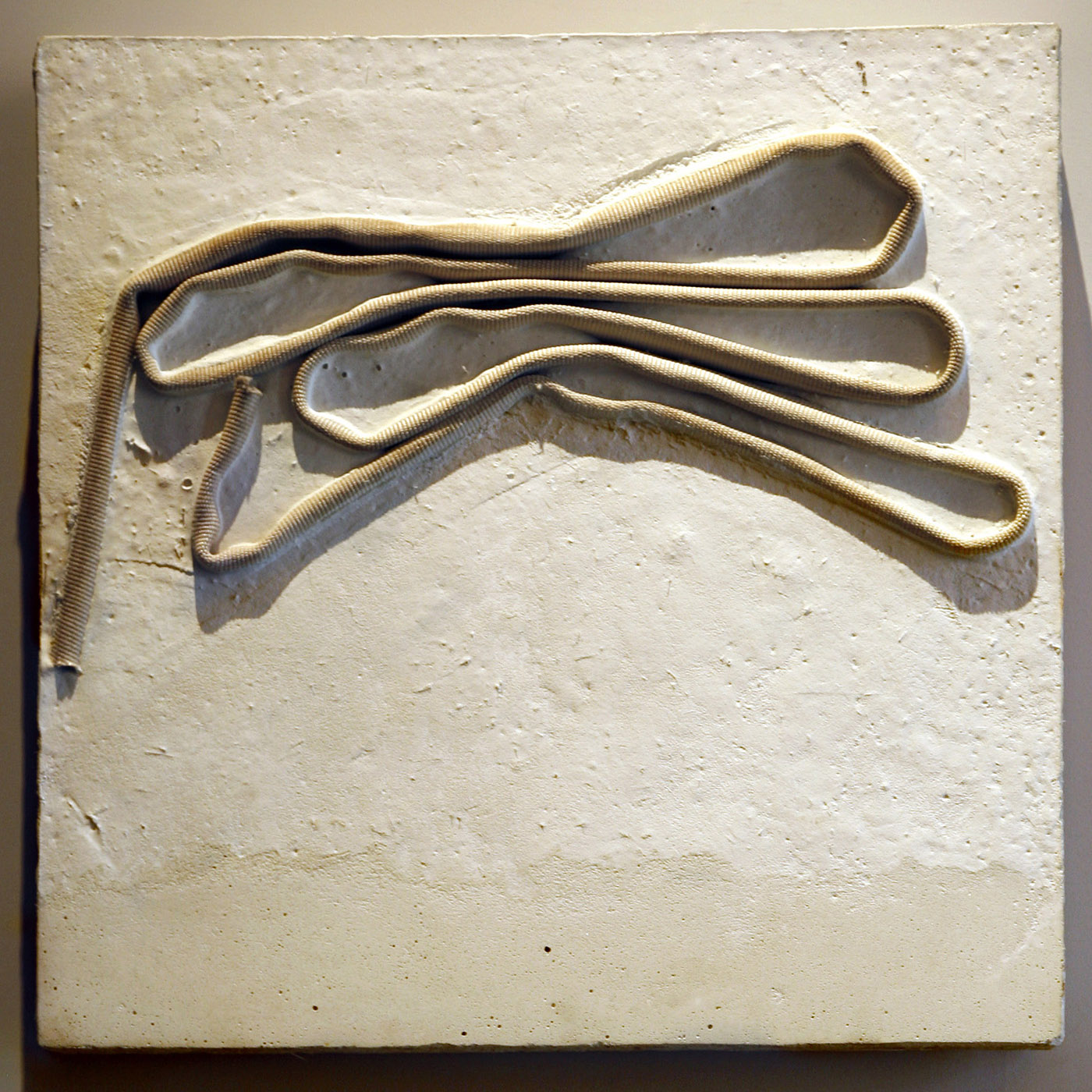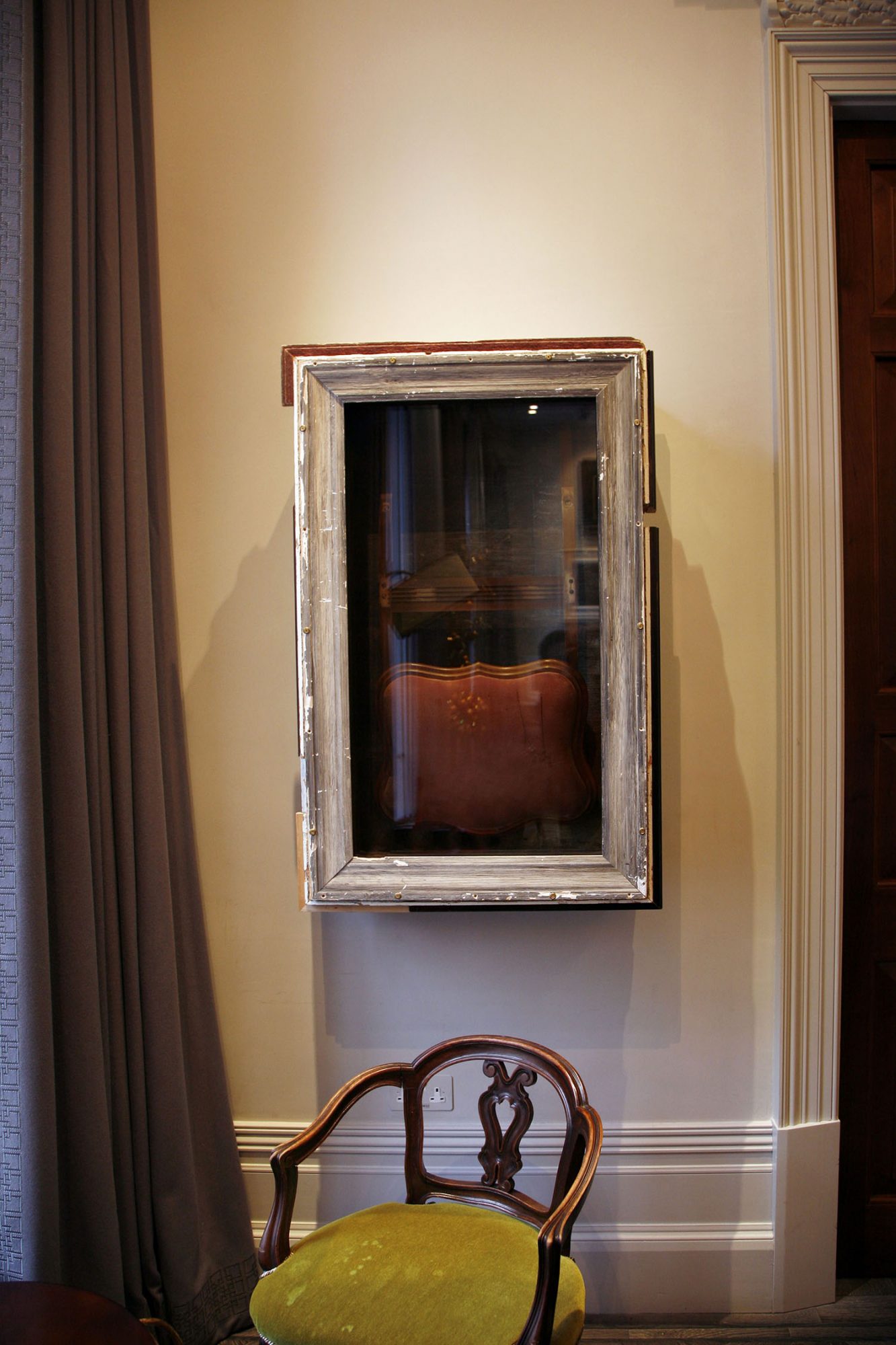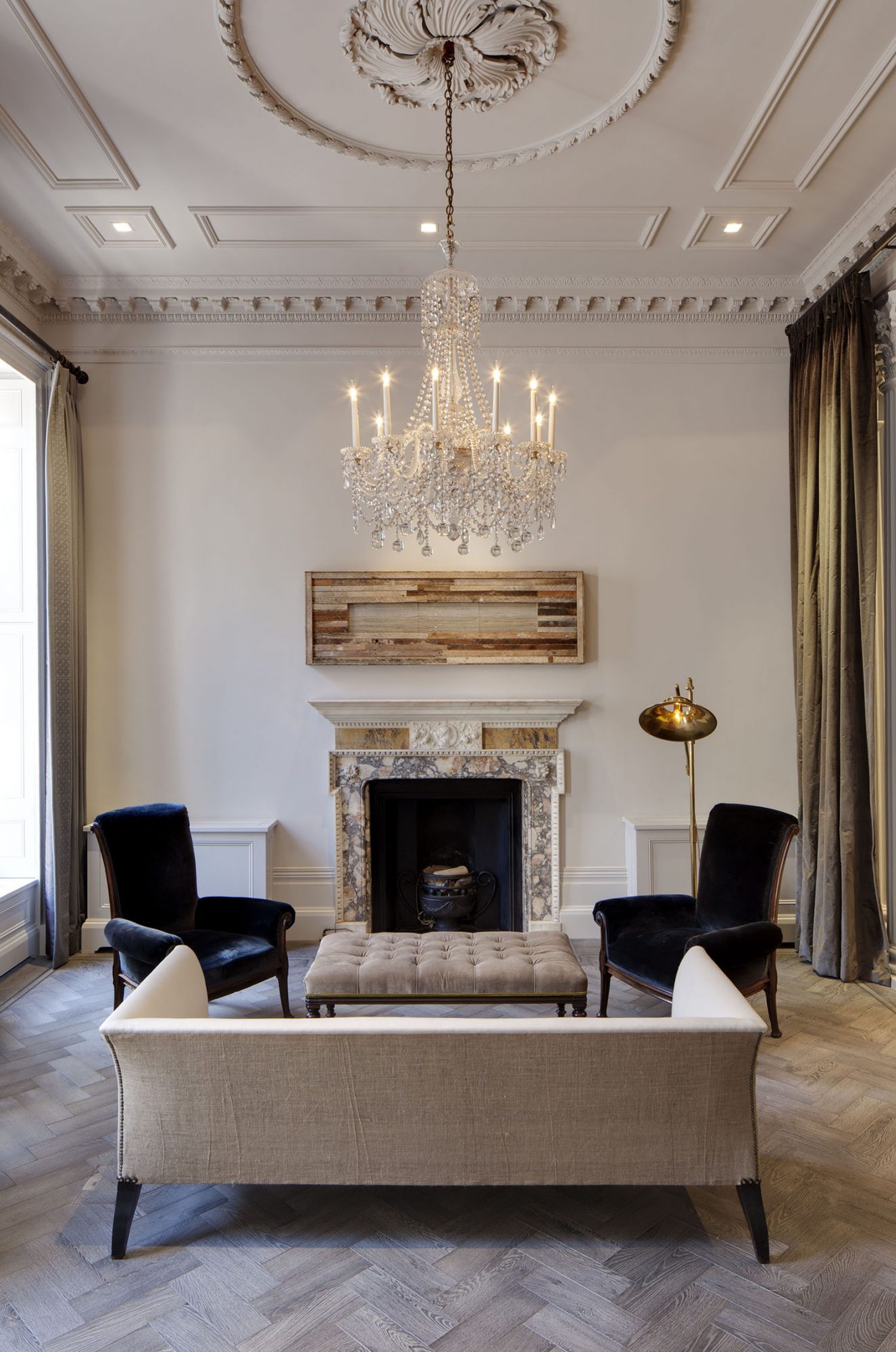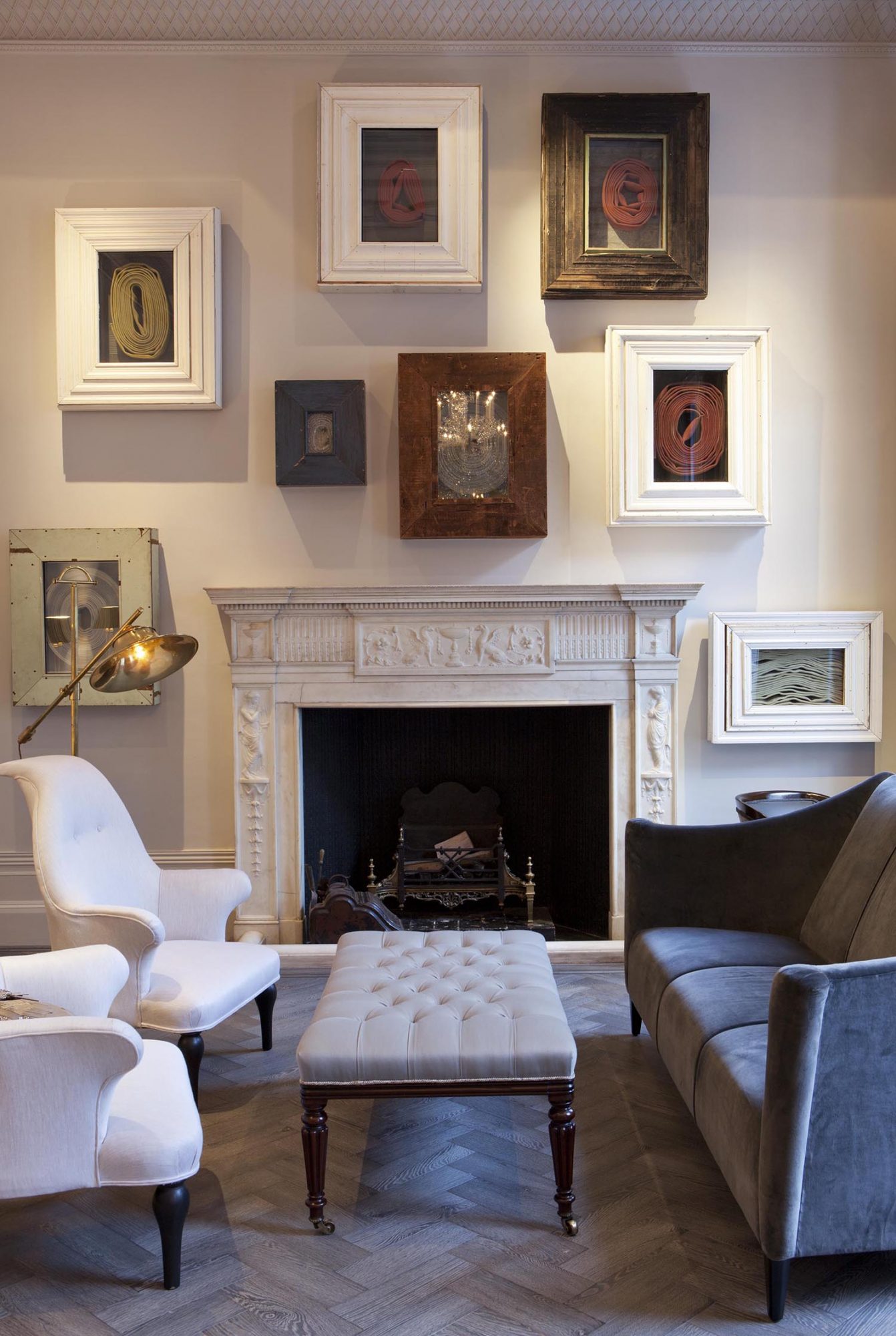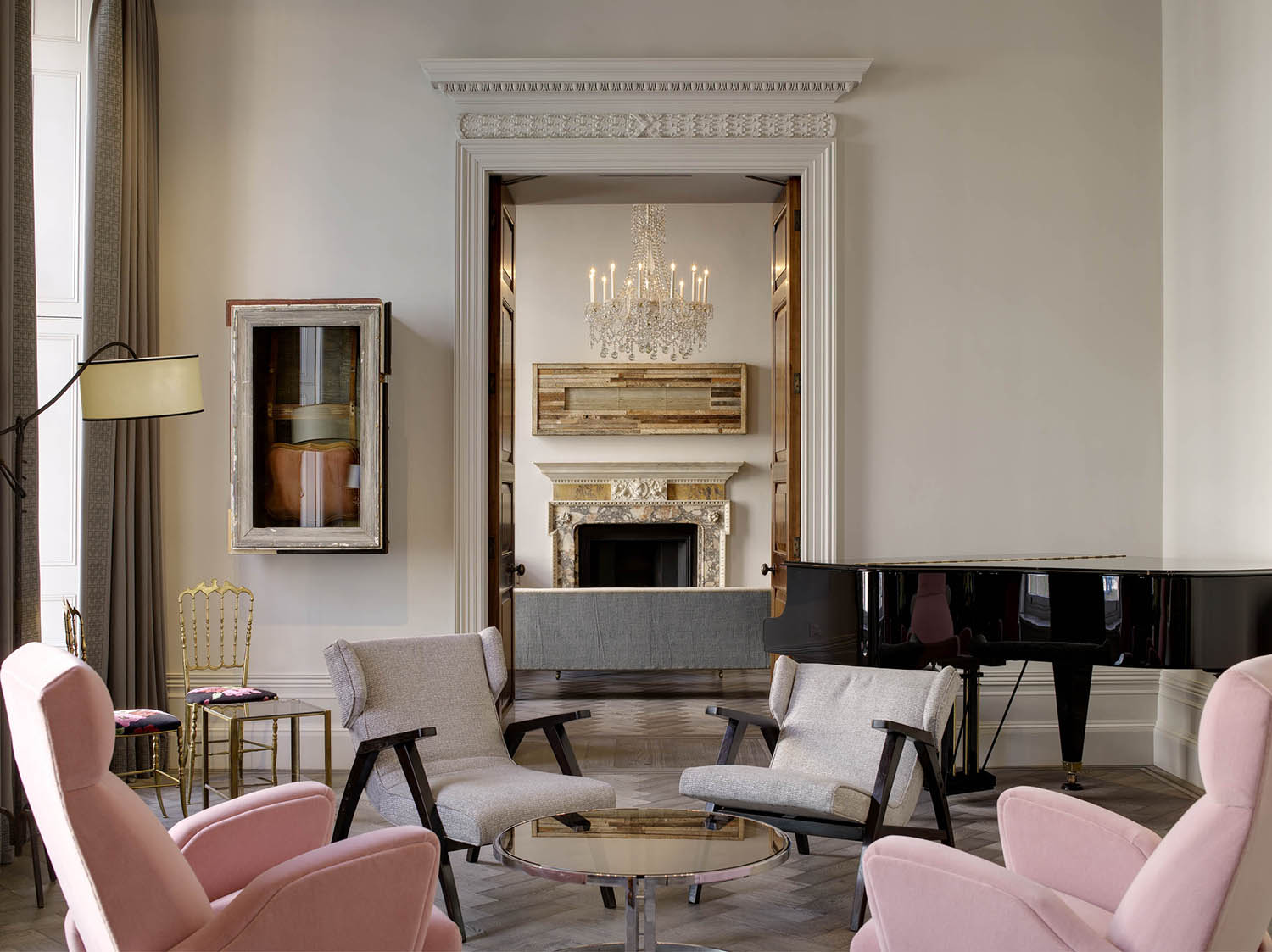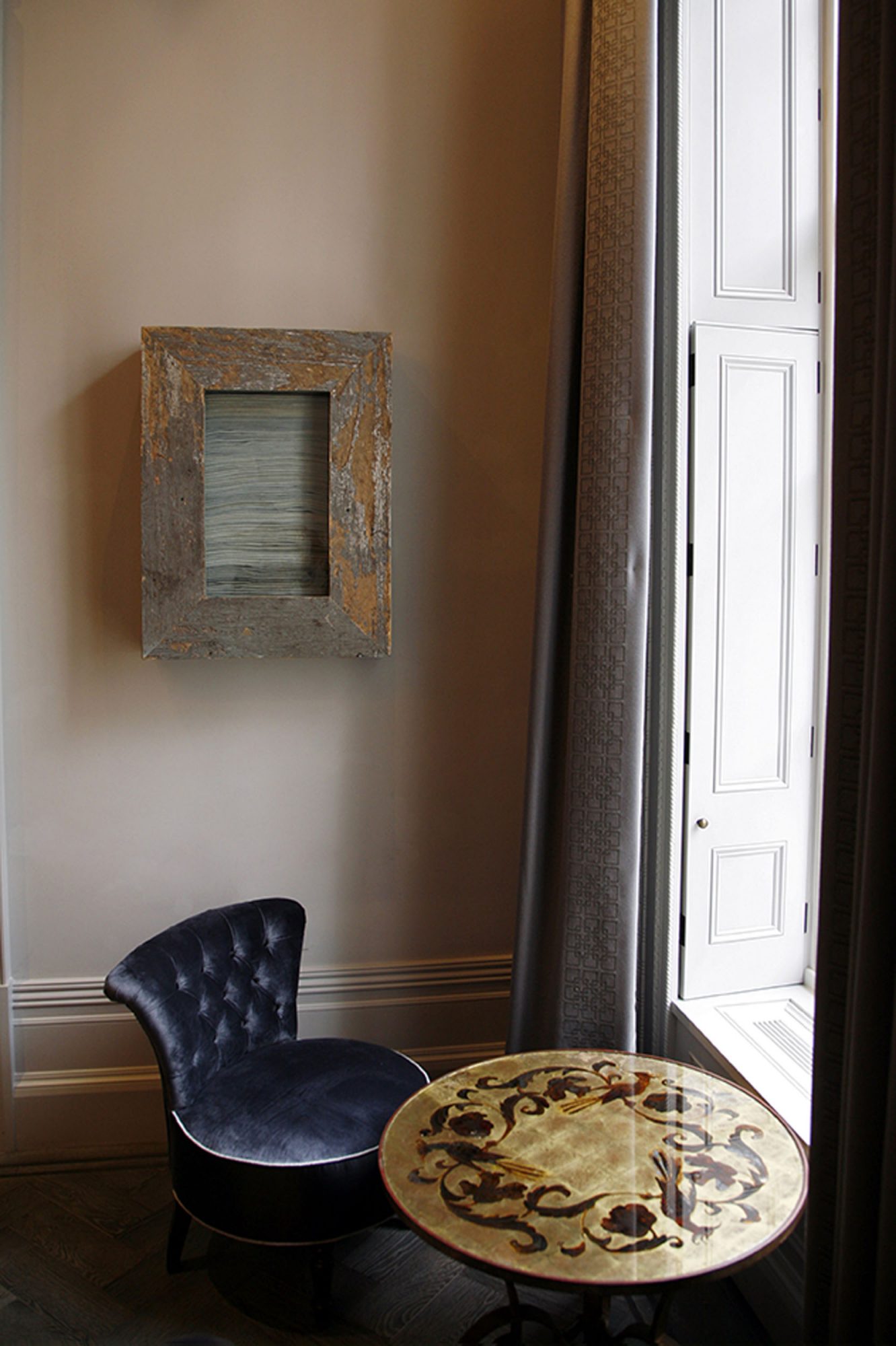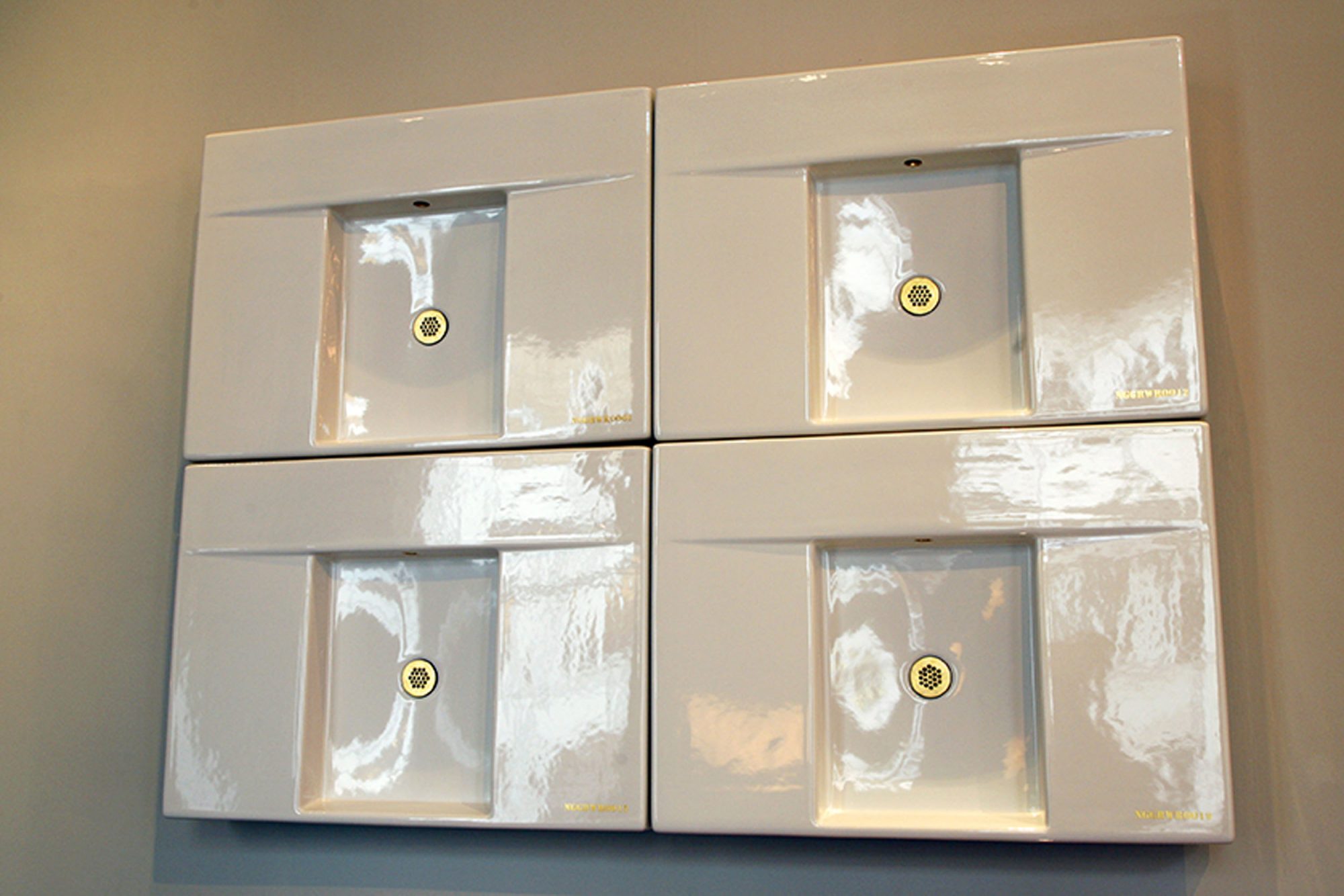Theaster Gates
— The Arts Club, London
Installation View: Theaster Gates, In the Event of Race Riot, The Arts Club
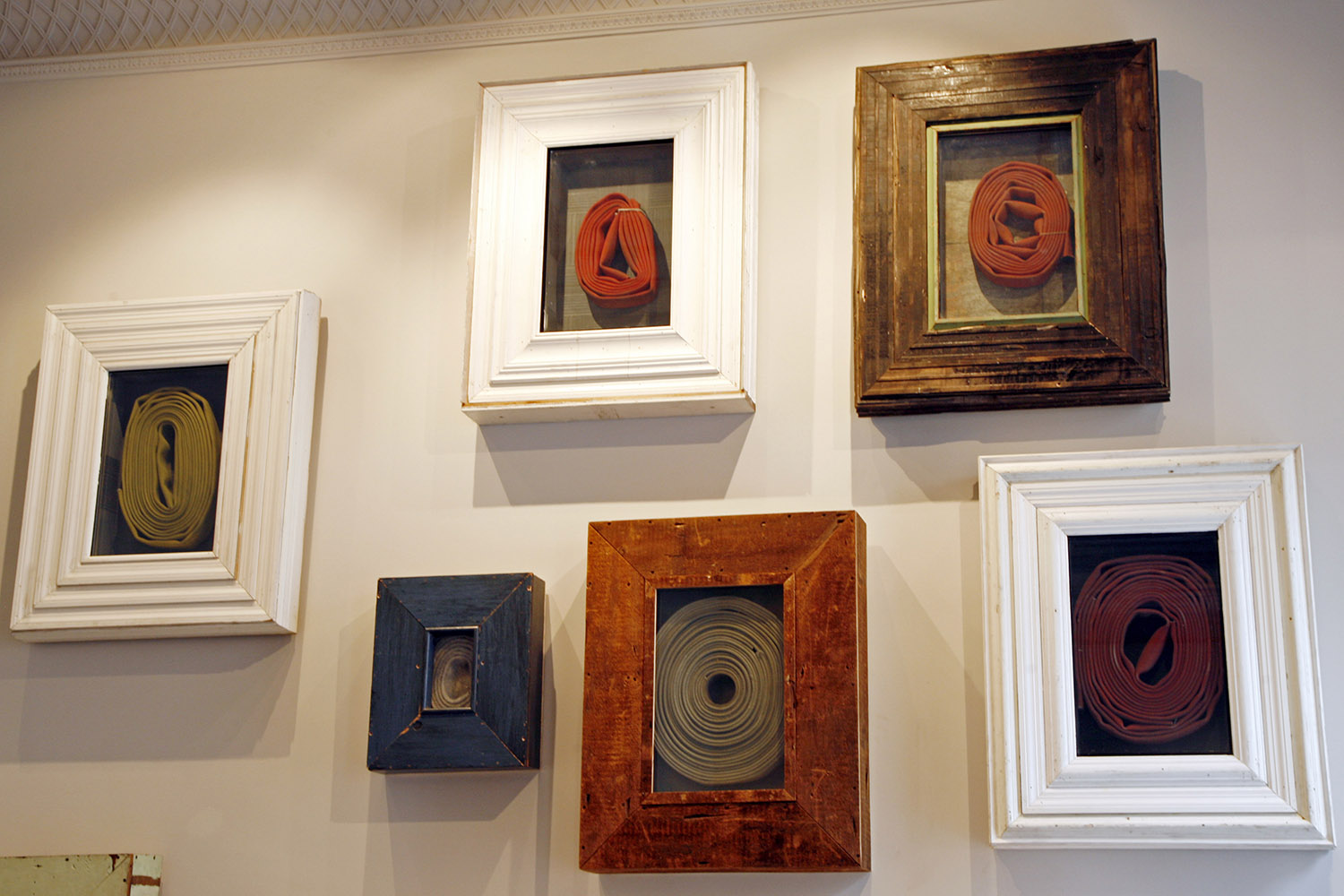
Tap to view slideshow
Wedel Art’s exhibition programme at The Arts club opens with the first European solo show of Chicago-based artist Theaster Gates.
With a background in urban planning, art and religious studies, Gates’ vibrant practice includes music, performance, sculpture and painting, as well as entire architectural environments – as with the houses he has bought, gutted and rebuilt in tough neighbourhoods of Chicago’s south-side as part of his ‘Dorchester Project’. Drawing on the buildings’ social histories to evoke universal ideas of awareness, human rights, identity and regeneration, Gates uses the materials he excavates much as a painter would his palette, creating works of great beauty with political bite.
The Arts Club exhibition featured an entire wall installation of works from the artist’s In the Event of a Race Riot series, for which he encased sections of looped and layered old fire-hoses in materials such as floorboards, patterned window glass and mouldings taken from his Chicago houses. Many people will remember these kinds of fire-hoses from their childhood schools or libraries. In 1968 in the U.S., however, they were used by police against African-Americans taking part in demonstrations during the civil rights movement. The latent violence suggested by these objects, which are supposed to save lives, gives these minimalist works a quiet power.
Cast-off objects such as plates or furniture – once valued by owners but abandoned in the Dorchester Project houses – are likewise appropriated by Gates, who seeks to reclaim their dignity in the context of an artwork. It’s easy to imagine something of the lives that once went on around the relatively plush, velour-covered chair encased in A Chair for Mr Perry. Perry is a relatively common African-American last name, and Gates’ use of it in the title suggests the aspirations and tastes of a middle-class African-American neighbourhood from a by-gone era.
Other key works in the exhibition included Gates’ Whyte Paintings – four white ceramic sinks, adorned with gold drains and lettering, that he produced in conjunction with the Koehler bathroom fittings factory. The works were first shown as part of Gates’ 2010 Milwaukee Art Museum solo show, for which the artist took on the persona of David Drake, a 19th century enslaved poet and potter from Edgefield, South Carolina. In performances Gates threw pots and other ceramic wares, re-interpreting Drake’s work to address a broader set of concerns about the place of labour and craft in present-day America. The pristine rectangular basins of the Whyte Paintings likewise address questions of labour, beauty and creativity, while the gold lettering and numbering suggests the nameless workers who create such objects.
Born in Chicago in 1973, Theaster Gates has had a number of major exhibitions, including a solo show at the Museum of Contemporary Art in Los Angeles in October 2011 and a survey show at the Museum of Contemporary Art in Chicago in 2012.
The exhibition is curated by Amelie von Wedel and Pernilla Holmes of Wedel Art.
